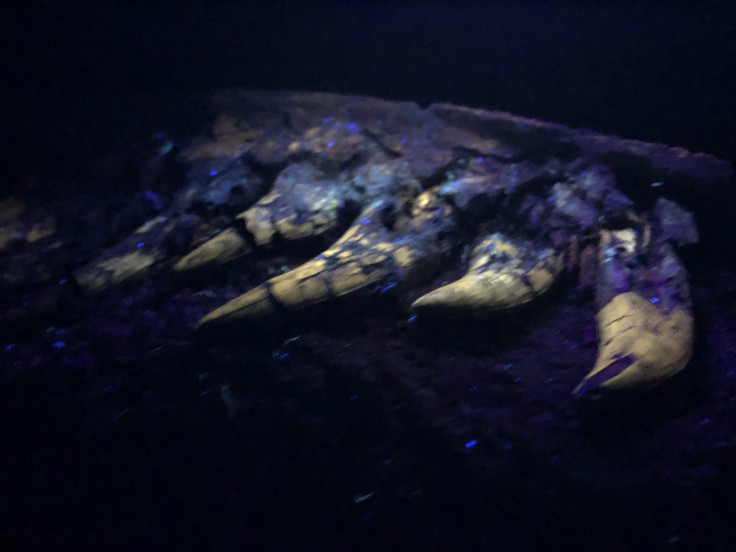Ancient 'Baby' Tyrannosaurus Rex Remains Found Nearly Intact In Montana
A group of Kansas University (KU) researchers working in Montana’s Hell Creek discovered nearly intact remains of what they believe is a young Tyrannosaurus rex (T. rex), which roamed Earth millions of years ago.
Hell Creek’s wildlife refuge is a paradise for paleontologists and has a history of giving up remains of long-dead dinosaurs. This specific discovery holds major importance as not many juvenile T. Rex have been discovered in the past and that too in a well-preserved condition.
The finding dates back 67 million years and includes the specimen’s entire upper part of the jaw with all teeth intact, parts of its 25-inch-long skull, foot, hips, and backbones. It is one of the few nearly complete young T. rex fossils unearthed till date, Kyle Atkins-Weltman, assistant fossil preparator at KU’s Biodiversity Institute, told Live Science.
The group involved in the study thinks the newfound baby T. rex was six to seven years old when it died. Fossil analysis suggests it would have been 17 feet long at the time of death, which is bigger than a 3-year-old T. rex unearthed in the past but way smaller than one that turned 11 before dying.
Atkins-Weltman also noted that T. rex grew immensely fast during their time. They gained nearly a kg every day and turned as big as the largest flesh-eating animals roaming the modern world by the age of four.

This discovery has the potential to give new insight into the life history of the fearsome predator including what it looked like. But before any of that, the research team still need to confirm these fossils certainly belong to T. rex and not to Nanotyrannus, a meat-eating small dinosaur species which has been part of a long-standing debate.
Some scientists believe Nanotyrannus is nothing more than juvenile T. rex specimens, but others consider the two as separate species.
"The teeth suggest it's a Tyrannosaurus rex; however, there is still more work to be done," David Burnham, preparator of vertebrate paleontology at the institute, said in a statement. "Because a young T. rex is so rare, there are only a few that have been found over the years, so it's difficult to discern what are [the] changes due to growth or if the differences in the bones reflect different species.” Just like humans, "adult dinosaur bones, especially in the skull," also witnessed changes with time.
Analysis of these fossils could finally help them draw or erase the line between the two, once and for all. “It's reasonable to assume Nanotyrannus could be valid — but we must show it's not just a stage in the life history of T. rex." The scientists are now analyzing these fossils and plan to return to the site in search of more evidence or fossils this summer.
© Copyright IBTimes 2024. All rights reserved.





















